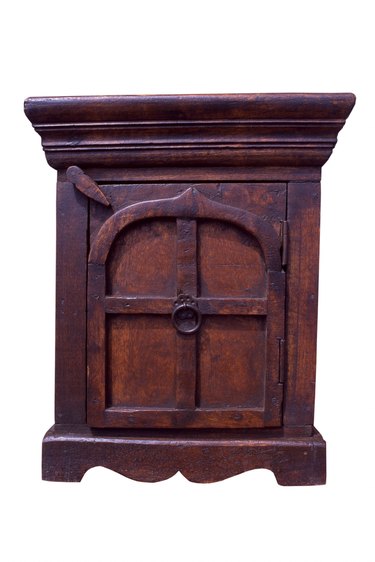
Termites are tiny bugs that not only infest drywall but also damage all kinds of wood furniture. They flourish more in the Southern states, when the weather remains humid most of the time. Drywood termites subsist in a wide range of dry wood furniture, including cabinets, chairs and shelves. Treat the pesky bugs as soon as you suspect an infestation to avoid damage to your wood cabinets.
Types
Video of the Day
The three main types of termites in the United States are subterranean, drywood and Formosan. The former two are the more common types of termites that are responsible for the bulk of damage in commercial and residential areas. Unlike drywood termites that live inside wooden objects, subterranean termites live in the soil and create tunnels to access aboveground food sources.
Video of the Day
Damage
Termites feed on cellulose, which is found in wood and wood furniture. As soon as they identify a potential food source, they leave a chemical trail for the rest of the colony to follow, resulting in an infestation. Because the pests die if exposed to direct sunlight or air, they enter houses through basements, attics or crawl spaces. Once inside, they infect wooden walls, floors, ceilings and furniture.
A wooden cabinet that makes a hollow or dull sound when you tap it should be closely examined with a sharp instrument for termite infestation. Termites damage the interior wood, making chambers in the wood grain that are connected by structured tunnels or galleries containing frass, fecal pellets that measure 2mm in length.
Infestation Signs
Signs of infestation are usually not apparent until termites have inhibited your wood cabinets for a long time, because their foraging activity occurs within the wood, not outside. Once the interior wood is completely damaged, blisters or raised surfaces appear on the exterior wood; they'll usually cave in when you touch them. Other signs of a termite infestation include wings, swarms of termites and frass.
Treatment
Once you confirm the presence of drywood termites in wood furniture and cabinets, take steps immediately to treat the pests and prevent further damage. Sweep frass from the ground and inspect the site every day for two weeks. If no new frass appears, the termites have either died out or moved to a new site. However, look for tiny, 1/16-inch holes in the wood cabinets if you notice fresh frass. The holes are probably discolored, sealed by the pests inside. Spot-treat the colony by injecting it with insecticide, or fumigate the area if the infestation is large or the infested cabinet contains multiple colonies. Once you've rid the piece of the infestation, repair or replace the wood in your cabinet with pressure-treated wood.
- Alabama Cooperative Extension; Drywood Termite Biology, Identification and Control; Thomas G. Shelton; March 2000
- Orkin: Termite Damage Signs
- University of Nebraska at Lincoln; Termite Infestation, Damage and Control; Barb Ogg
- Terminix: Signs of Termite Damage
- Arizona Cooperative Extension; Drywood Termites; Dawn H. Gouge, et al.; June 2001